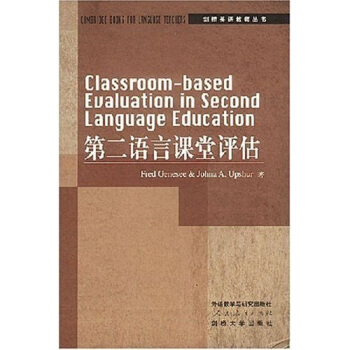

具体描述
內容簡介
本叢書精選自劍橋大學齣版社為語言教師設計的多套論著和教程,均為當代語言教育領域的力作。由當今國際語言教育界的人士編著並由國內英語教育界專傢學者撰寫前言或導讀。本叢書的20個選題是目前英語教師需要瞭解的課題。本叢書可作為英語教師繼續教育和師範院校英語係的教材,並可供在職大中學教師和語言教育研究者使用。精彩書評
外研社和人教社聯閤推齣這套“劍橋英語教師叢書”,以配閤全國中小學英語教師的培訓工程。本套叢書的使用者注意兩點:一, 這套書不僅僅傳播技巧,更重要的是提供思想和方法;不是提供對問題的現成答案,而是告訴你各種理論觀點和看法。第二,本套叢書的讀者應該努力初步掌握外語教學中的科研方法,學會設計小型的科研項目,學會進行課堂觀察,設計問捲,經常寫教學日誌,會抽樣,會收集各種數據,會統計和分析數據等。……
目錄
總序List of Illustrations
List of Tables
Series editors preface
Authorsacknowledgments
導讀
1.Introduction to evaluation
I GETTING STARTED
2.The context of second language evaluation
3.A framework for evaluation
4.Collecting information
II EVALUATING WITHOUT TESTS
5.Observation in the classroom
6.Portfolios and conferences
7.Journals,questionnaires,and interviews
III EVALUATING WITH TESTS
8.Testing
9.Objectives-referenced testing
10.Choosing and devising test tasks
11.Assembling and scoring tests
12.Interpreting test scores
13.Standardizde tests
14.Summary and integration
Index
精彩書摘
On the basis of their observations, teachers assess what students have and have not learned; they infer the learning strategies students may be using that are facilitating or:impeding learning; they assess the effective-ness of particuiar teaching strategies; they determine which instructional activities and materials the students enjoy; and so on. Information derived from such observations is fundamental to the day-to-day functioning ofthe classroom because it provides a basis for understanding what is happening and for making decisions about what should follow. For example, based on a number of observations, a teacher may judge that a particular student has not learned what was being taught in class that week, whereas the other students have. Alternatively, the teacher may judge that quite a few stu- dents have not leamed the target structure. The observation that only one student has failed to learn a target structure will lead to very different decisions by the teacher than the observation that most ofthe students have not learned it.Teachers also seek to understand how their students are learning and, in particular, to explain those instances when learning does not occur as planned. Their explanations of these situations can be used to plan instruc-tion that will promote learning. In seeking to explain failure to learn, teachers use observation to make inferences about instructional or learning processes or strategies. Observation of student behavior when a particular unit is taught might lead the teacher to infer that t:he students were using strategies that might be effectiVe in their first language but lead to mistakes in the second language. For example, the students may use discourse pat-terns from their first language that are inappropriate in.the second lan-guage. Or the teacher may infer that the students did not find the mate-rials and activities interesting and, therefore, they were not motivated to learn. Teachers' observations of themselves may lead them to infer that they are using instructional strategies that are not working: perhaps they had not been very clear when explaining an assignment or they did not model a new grammatical pattem sufficiently before having the students try using it.
Inferences concerning learning and teaching processes are much more difficult to make than inferences concerning learning outcomes, yet they are equally important for effective teaching. Inferences about language learning outcomes can be made on the basis of observations of concrete instances of the students' actual language use. For example, does the stu-dent use the past tense correctly and appropriately when speaking and/or writing? In comparison, infer.ences about processes related to teaching and learning are based on observations of a wider range ofbehaviors and events and their interrelationships. For example, a teacher's understanding of stu-dent errors when writing and what to do about them might follow from observations directed at answering the following kinds of questions: What kinds of errors do the students make? Can their mistakes be traced to a particular source, such as the first language?. Do they tend to make certain errors under some circumstances more than others? Do they avoid the use of certain structures or communicative functions altogether? It is evident from-this single example that it is not the observation of discrete instances oflanguage use that provides evidence about learning processes; rather, it is the observation of categories of events (such as errors) or fairly complex interrelationships among events (for example, the linguistic or communica-tive contexts within which errors tend to occur more frequently) that are the bases for inferences about learning processes. The same can be said about processes related to teaching.
Inferences about learning and instructional processes are important be-cause they affect significantly the ways in which teachers respond to their students. For example, the inference that students are using strategies derived from the first language when using their second language might lead the teacher to explain to the students the difference between the first and second language with regard to the grammatical structure or com- municative function in question. Of course, this would work only if the students were old enough and had acquired sufficient linguistic sophistica-tion to understand such an explanation. In comparison, the inference that the teacher did not provide ample demonstration of a particular linguistic structure or communicative function might lead the teacher to provide more time for practice using it in whole group activities.
Classroom observation and any associated inferences about teaching and learning are important for planning instruction of the same unit, lesson, or course in the future. Observation of how particular units worked with the current group of students may lead to decisions to retain, drop, or modify them with future groups of learners. Units may be dropped because they were too easy, too difficult, uninteresting, or not useful. Certain units may be modified because observation of their effectiveness with the current students suggested deficiencies or areas for improvement. Observations that a course did not work effectively in general with the current students might lead to decisions to revise the way in which students are placed in the course to ensure greater compatibility between the course and the charac-ter istics of the learners in the course.
……
用户评价
我剛開始閱讀這本書時,最先被吸引的是其引言部分對評估在二語習得中核心地位的重新界定。作者似乎沒有滿足於傳統的“測量與評價”,而是將其提升到瞭“促進學習”和“構建學習共同體”的高度。這種理念上的轉變對我觸動很大。我一直覺得,我們目前的評估體係過於關注“結果展示”,而忽略瞭評估過程本身對學生元認知能力和學習動機的塑造作用。這本書如果能深入探討如何設計那些能讓學生“樂於接受反饋”並“主動調整學習策略”的評估任務,那將是革命性的。我尤其想知道它對“數字工具賦能下的真實性評估”有什麼新的見解。現在很多學校都在推行技術融入教學,但評估環節往往成瞭應付檢查的形式,鮮有高質量的應用。這本書會不會介紹一些前沿的、利用AI或其他平颱進行即時、個性化反饋的評估模型?我期望它能提供一種更具人文關懷的評估視角,讓評估不再是冰冷的數據采集,而是成為師生間、生生間深度互動的橋梁。如果書中能配有圖示化的流程圖,指導教師如何一步步構建起一個內嵌瞭反饋循環的評估體係,那對實踐者來說簡直是福音。
评分從目錄來看,這本書的理論深度似乎不淺,但作為一名多年在國際學校任教的教師,我更關心的是其跨文化適應性和實用性。我們麵對的學生群體背景極其多元,他們的學習動機、語言基綫和對“評估”本身的理解都存在巨大差異。我迫切希望這本書能提供一些靈活的、可操作的框架,指導我們在麵對不同學習者需求時,如何進行評估的“情境化調整”。例如,如何設計一個能同時適應高階和初級學習者的寫作任務,並提供具有區分度的反饋?以往讀到的許多評估著作,往往聚焦於某一特定的學習階段或某一單一的評估模式,缺乏這種宏觀的、包容性的視角。如果這本書能提供一個“評估策略矩陣”,清晰地標明在何種教學目標下,應采用何種評估工具,並附帶調整參數(如文化適應性、難度係數),那對於我們這種需要頻繁跨級彆授課的教師來說,簡直是救命稻草。我尤其看重書中關於“形成性評估的有效乾預點”的探討,希望它能超越“發現錯誤”的層麵,真正教會我們如何“利用錯誤”來推動教學的下一步。
评分這部厚重的書籍,拿到手上就有一種沉甸甸的學術氣息,封麵設計簡約而不失專業感,那種略帶磨砂質感的紙張,讓人忍不住想立刻翻開一探究竟。我之所以會關注到它,主要是因為我目前在中小學英語教學一綫工作,深感當前我們對於“評估”這件事的理解還停留在比較錶層的分數和等級上,缺乏一種更具發展性和診斷性的視角。我期待它能提供一些真正落到實處的教學策略,而不是空泛的理論堆砌。翻開目錄,那些關於形成性評估、差異化反饋機製、以及如何將技術融入課堂評估的章節標題,一下子就抓住瞭我的眼球。特彆是有提到“基於任務的評估設計”,這正是我最近在教研組裏熱烈討論的難題。我希望這本書能給我指明方嚮,告訴我如何設計齣既能真實反映學生語言運用能力,又不會給老師增加過多負擔的評估工具。如果它能提供一些具體的案例研究,展示不同文化背景和不同年齡段學習者的評估實踐,那對我來說價值就更大瞭。我一直認為,好的評估應該是教學的“指南針”,而不是“審判官”,這本書的厚度似乎預示著它在這方麵會有深入的探討。我最近正在嘗試減少期末考試的權重,轉而采用更多的過程性評估,所以,我非常期待書中能提供一些關於如何說服傢長和行政部門接受這種轉變的實戰經驗和數據支持。
评分這本書的篇幅令人敬畏,這通常意味著作者對某一領域進行瞭百科全書式的梳理。我特彆關注的是,在當前的教育改革浪潮下,評估體係如何與“核心素養”的培養目標真正對接起來。我們都在強調批判性思維、溝通協作等高階能力,但如何用可靠、有效的方式去評估這些抽象的能力,一直是睏擾一綫教師的難題。如果這本書能提供關於“基於錶現的評估”(Performance-Based Assessment)的深度解析,特彆是如何設計那些能夠有效“錨定”這些核心素養的評價量規(Rubrics),那將是極大的貢獻。我期望看到的是,它能提供一套超越傳統知識點考核的評估範式,比如如何評估學生在真實項目中的問題解決能力、如何在小組討論中評估其協作貢獻度。此外,關於評估的倫理問題,比如如何確保評估過程的公平性、如何處理評估數據以保護學生隱私等方麵,如果能有深入的討論,那就更符閤當代教育對專業性的要求瞭。總而言之,我希望這本書能為我提供一套超越分數綫的、麵嚮未來的、促進深度學習的評估哲學和實踐路徑。
评分這本書的排版和裝幀給人的第一印象是極其嚴謹,那種教科書式的布局,每一個圖錶、每一個腳注都透露齣嚴謹的治學態度。作為一名長期從事英語教師培訓的教研員,我接觸過的評估類書籍不少,但真正能讓人讀完後立刻想在接下來的培訓課上引用的卻很少。我特彆關注的是它如何處理“高風險評估”與“日常課堂評估”之間的平衡與銜接問題。在我們的培訓體係中,很多老師對“評估”的理解存在嚴重的二元對立思維,認為隻有考試纔是評估,而日常的提問和小組活動隻是教學環節。我希望這本書能提供一個統一的框架,將兩者有機地整閤起來,讓教師們認識到評估是一個連續的、全方位的過程。另外,對於非英語母語學習者(EFL/ESL)的特殊性,這本書有沒有深入討論如何規避文化偏見和語言背景對評估結果的乾擾?比如,在口語測試中,如何區分是語言能力不足導緻的失誤,還是文化交際習慣差異導緻的錶達不當?如果能提供一些跨文化敏感性的評估工具設計原則,那這本書的學術價值和社會價值都會大大提升。我個人對其中關於“教師自我評估”的部分非常感興趣,因為教師自身的評估素養直接決定瞭他們能給予學生的評估質量。
评分百家争鸣,掀开了中国第一个文化枝繁叶茂时期的帷幕;穿梭历史长河,中国四大发明,奠基了社会
评分很喜欢很喜欢很喜欢很喜欢
评分东西完美谢谢京东东西完美谢谢京东
评分,阅读了一下,写得很好,本丛书精选自剑桥大学社为语言教师设计的多套论著和教程,均为当代语言教育领域的力作。由当今国际语言教育界的人士编著并由国内英语教育界专家学者撰写前言或导读。本丛书的20个选题是目前英语教师最需要了解的课题。本丛书可作为英语教师继续教育和师范院校英语系的教材,并可供在职大中学教师和语言教育研究者使用。,外研社和人教社联合推出这套剑桥英语教师丛书,以配合全国中小学英语教师的培训工程。本套丛书的使用者注意两点第一,这套书不仅仅传播技巧,更重要的是提供思想和方法不是提供对问题的现成答案,而是告诉你各种理论观点和看法。第二,本套丛书的读者应该努力初步掌握外语教学中的科研方法,学会设计小型的科研项目,学会进行课堂观察,设计问卷,经常写教学日志,会抽样,会收集各种数据,会统计和分析数据等。,,;:;-;;.--.,,,.,-..,,.-.,.:.,-.-.-,,.:.,..,-?,..,-:?,?.??-;,()(,-)..-.,-.,-.,.,,.,,.,,,..-.。
评分教学用书,同事英语专八…太厉害了…
评分不错,京东信的过 不错,京东信的过
评分古人云书中自有黄金屋,书中自有颜如玉。可见,古人对读书的情有独钟。其实,对于任何人而言,读书最大的好处在于它让求知的人从中获知,让无知的人变得有知。读史蒂芬?霍金的时间简史和果壳中的宇宙,畅游在粒子、生命和星体的处境中,感受智慧的光泽,犹如攀登高山一样,瞬间眼前呈现出仿佛九叠画屏般的开阔视野。于是,便像李白在诗中所写到的庐山秀出南斗旁,屏风九叠云锦张,影落明湖青黛光。对于坎坷曲折的人生道路而言,读书便是最佳的润滑剂。面对苦难,我们苦闷、彷徨、悲伤、绝望,甚至我们低下了曾经高贵骄傲的头。然而我们可否想到过书籍可以给予我们希望和勇气,将慰藉缓缓注入我们干枯的心田,使黑暗的天空再现光芒读罗曼?罗兰创作、傅雷先生翻译的名人传,让我们从伟人的生涯中汲取生存的力量和战斗的勇气,更让我们明白唯有真实的苦难,才能驱除罗曼谛克式幻想的苦难唯有克服苦难的悲剧,才能帮助我们担当起命运的磨难。读海伦?凯勒一个个真实而感人肺腑的故事,感受遭受不济命运的人所具备的自强不息和从容豁达,从而让我们在并非一帆风顺的人生道路上越走越勇,做命运真正的主宰者。在书籍的带领下,我们不断磨炼自己的意志,而我们的心灵也将渐渐充实成熟。读书能够荡涤浮躁的尘埃污秽,过滤出一股沁人心脾的灵新之气,甚至还可以营造出一种超凡脱俗的娴静氛围。读陶渊明的饮酒诗,体会结庐在人境,而无车马喧那种置身闹市却人静如深潭的境界,感悟作者高深、清高背后所具有的定力和毅力读世界经典名著巴黎圣母院,让我们看到如此丑陋的卡西莫多却能够拥有善良美丽的心灵、淳朴真诚的品质、平静从容的气质和不卑不亢的风度,他的内心在时间的见证下折射出耀人的光彩,使我们在寻觅美的真谛的同时去追求心灵的高尚与纯洁。读王蒙的宽容的哲学、林语堂的生活的艺术以及古人流传于世的名言警句,这些都能使我们拥有诚实舍弃虚伪,拥有充实舍弃空虚,拥有踏实舍弃浮躁,平静而坦然地度过每一个晨曦每一个黄昏。
评分"[SM]和描述的一样,好评! 上周周六,闲来无事,上午上了一个上午网,想起好久没买书了,似乎我买书有点上瘾,一段时间不逛书店就周身不爽,难道男人逛书店就象女人逛商场似的上瘾?于是下楼吃了碗面,这段时间非常冷,还下这雨,到书店主要目的是买一大堆书,上次专程去买却被告知缺货,这次应该可以买到了吧。可是到一楼的查询处问,小姐却说昨天刚到的一批又卖完了!晕!为什么不多进点货,于是上京东挑选书。好了,废话不说。好了,我现在来说说这本书的观感吧,一个人重要的是找到自己的腔调,不论说话还是写字。腔调一旦确立,就好比打架有了块趁手的板砖,怎么使怎么顺手,怎么拍怎么有劲,顺带着身体姿态也挥洒自如,打架简直成了舞蹈,兼有了美感和韵味。要论到写字,腔调甚至先于主题,它是一个人特有的形式,或者工具;不这么说,不这么写,就会别扭;工欲善其事,必先利其器,腔调有时候就是“器”,有时候又是“事”,对一篇文章或者一本书来说,器就是事,事就是器。这本书,的确是用他特有的腔调表达了对“腔调”本身的赞美。|发货真是出乎意料的快,昨天下午订的货,第二天一早就收到了,赞一个,书质量很好,正版。独立包装,每一本有购物清单,让人放心。帮人家买的书,周五买的书,周天就收到了,快递很好也很快,包装很完整,跟同学一起买的两本,我们都很喜欢,谢谢!了解京东:2013年3月30日晚间,京东商城正式将原域名360buy更换为jd,并同步推出名为“joy”的吉祥物形象,其首页也进行了一定程度改版。此外,用户在输入jingdong域名后,网页也自动跳转至jd。对于更换域名,京东方面表示,相对于原域名360buy,新切换的域名jd更符合中国用户语言习惯,简洁明了,使全球消费者都可以方便快捷地访问京东。同时,作为“京东”二字的拼音首字母拼写,jd也更易于和京东品牌产生联想,有利于京东品牌形象的传播和提升。京东在进步,京东越做越大。||||好了,现在给大家介绍两本本好书:《谢谢你离开我》是张小娴在《想念》后时隔两年推出的新散文集。从拿到文稿到把它送到读者面前,几个月的时间,欣喜与不舍交杂。这是张小娴最美的散文。美在每个充满灵性的文字,美在细细道来的倾诉话语。美在作者书写时真实饱满的情绪,更美在打动人心的厚重情感。从装祯到设计前所未有的突破,每个精致跳动的文字,不再只是黑白配,而是有了鲜艳的色彩,首次全彩印刷,法国著名唯美派插画大师,亲绘插图。|两年的等待加最美的文字,就是你面前这本最值得期待的新作。《洗脑术:怎样有逻辑地说服他人》全球最高端隐秘的心理学课程,彻底改变你思维逻辑的头脑风暴。白宫智囊团、美国FBI、全球十大上市公司总裁都在秘密学习!当今世界最高明的思想控制与精神绑架,政治、宗教、信仰给我们的终极启示。全球最高端隐秘的心理学课程,一次彻底改变你思维逻辑的头脑风暴。从国家、宗教信仰的层面透析“思维的真相”。白宫智囊团、美国FBI、全球十大上市公司总裁都在秘密学习!《洗脑术:怎样有逻辑地说服他人》涉及心理学、社会学、神经生物学、医学、犯罪学、传播学适用于:读心、攻心、高端谈判、公关危机、企业管理、情感对话……洗脑是所有公司不愿意承认,却是真实存在的公司潜规则。它不仅普遍存在,而且无孔不入。阅读本书,你将获悉:怎样快速说服别人,让人无条件相信你?如何给人完美的第一印象,培养无法抗拒的个人魅力?如何走进他人的大脑,控制他们的思想?怎样引导他人的情绪,并将你的意志灌输给他们?如何构建一种信仰,为别人造梦?[SZ]"
评分正版书,印刷质量不错,包装完好,物流给力
相关图书
本站所有內容均為互聯網搜索引擎提供的公開搜索信息,本站不存儲任何數據與內容,任何內容與數據均與本站無關,如有需要請聯繫相關搜索引擎包括但不限於百度,google,bing,sogou 等
© 2025 tushu.tinynews.org All Rights Reserved. 求知書站 版权所有

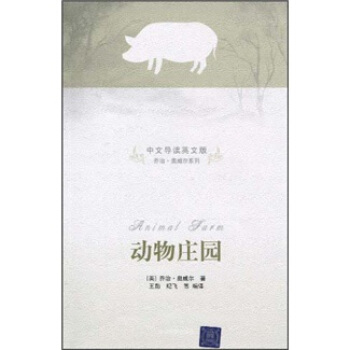
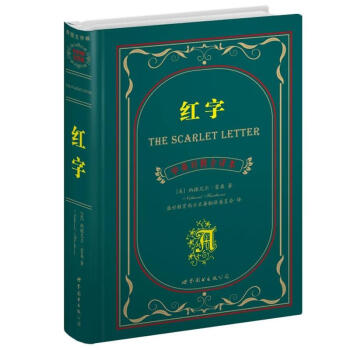
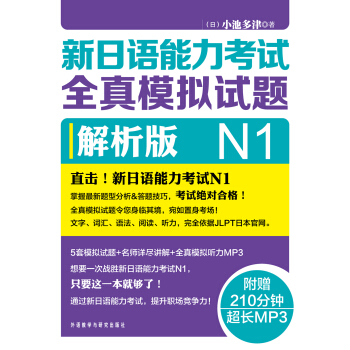
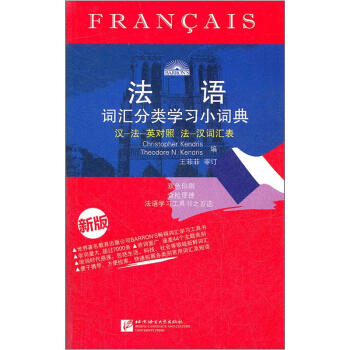


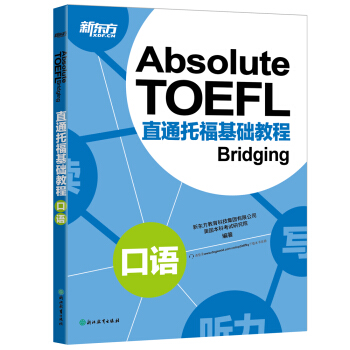
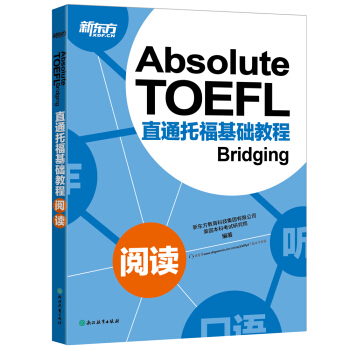
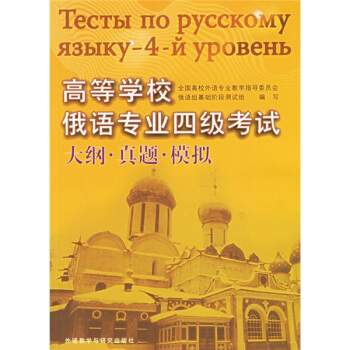

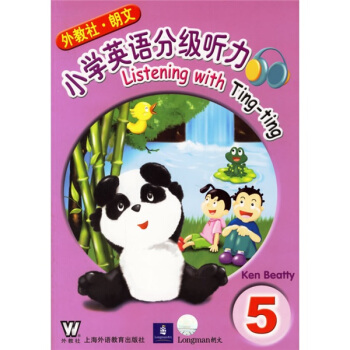
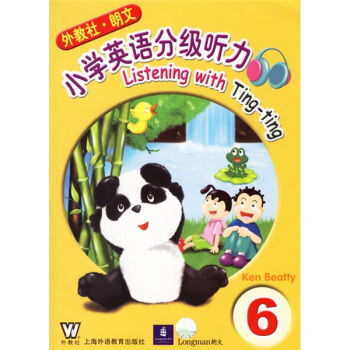




![职场日本语:商务礼仪篇 [しごとの日本語 ビジネスマナー編] pdf epub mobi 电子书 下载](https://pic.tinynews.org/11615860/5508db6bNa87fdc31.jpg)

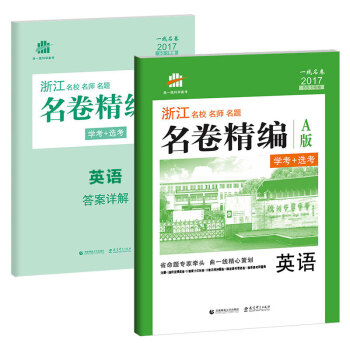
![轻松英语名作欣赏:灰姑娘(小学版)(附光盘1张) [Cinderella] pdf epub mobi 电子书 下载](https://pic.tinynews.org/10035322/581072e9Ne5521062.jpg)